Many homeowners want the facade of their home to look bright and unusual. The best assistant in this is facade paint. It is able to give the building an elegant fresh look and at the same time protects the walls from the influence of the external environment. But keep in mind that, depending on the type of paint, its properties and the amount of material spent. So, how to choose facade paint for external work? On this below.
Basic properties
All paints are divided by the type of binder, vapor -propelled, resistance to and a number of other properties. Let’s talk about each of these qualities in detail.
- Binders. As a rule, vinyl, silicone and acrylic resins act as connecting components, but it can also be lime, potassium glass or cement. In cheap colors, instead of a binder, auxiliary fillers are contained, which do not perform any function and only increase the volume. Unfortunately, there is no guarantee that information about the binders will be genuine, since it all depends on the honesty of the manufacturer. In this regard, we recommend trusting trusted brands that have successfully proven themselves in the market.
- Vapor permeability. This is the ability of paint not to prevent the release of steam from the walls of the building. The vapor permeability is indicated in the grams of water, which will penetrate through 1 m & SUP2 surfaces during the day. The higher this indicator, the better this property. The ideal vapor permeability for facade paint is 130 g/m & SUP2./24 hours. Some brands use the SD coefficient for this. Here, on the contrary, the less it is, the property to pass moisture above. From this point of view, the optimal value is 0.11-0.05 m.
- Material consumption. The values of the cost characteristics are from 5 to 13 l/m & SUP2 per layer. This indicator is affected by the texture of the facade that needs to be painted. For applying facade paint, less liters will spent on a smooth base than on a textured rough basis.
- Water permeability. High -quality paint creates a strong layer that protects the wall well from moisture. Thanks to this, salts are not deposited on the walls of the building, plaster is firmly kept, mold does not develop. Refracts with a coefficient of 0.05 kg/m & SUP2 have good water resistance: keep in mind: the lower this value, the more waterproof the paint layer will be.
Types of colors
The most popular is the classification of colors by surface type. The following types can be distinguished here:
- Facade wood paint. It is used for painting country houses, garden arbor, log facades, fences, rafters and even internal walls. It is made on the basis of dispersion and silicate coloring substances. The facade of the building, covered with such paint, is not subject to rot and occurrence of fungus. The most popular shades are brown, green, blue and beige.
- Textured facade paint. It forms a strong coating, therefore it is used for painting facades that undergo high load (basement parts of houses, garages, clinics and sports complexes). The composition includes hard particles, which are responsible for creating a unique texture. Structural facade paint is applied with a structural roller, sponge or comb.
- Painting for concrete surfaces. Here you can use silicate, latex and acrylic compositions.
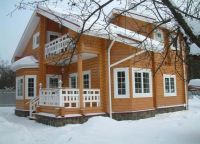
|
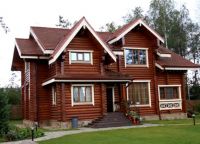
|
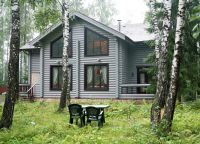
|
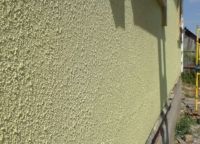
|
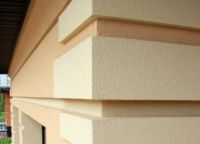
|
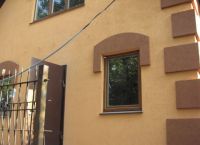
|
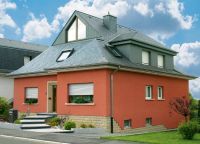
|
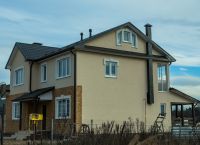
|
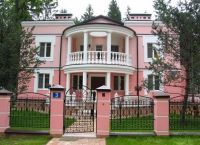
|
It should be noted that the color of the paint can be chosen by yourself, by means of recole. If you need facade white paint, then you can simply purchase an unrelated composition.
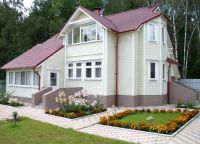
|
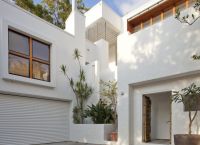
|
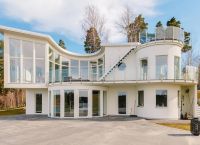
|
